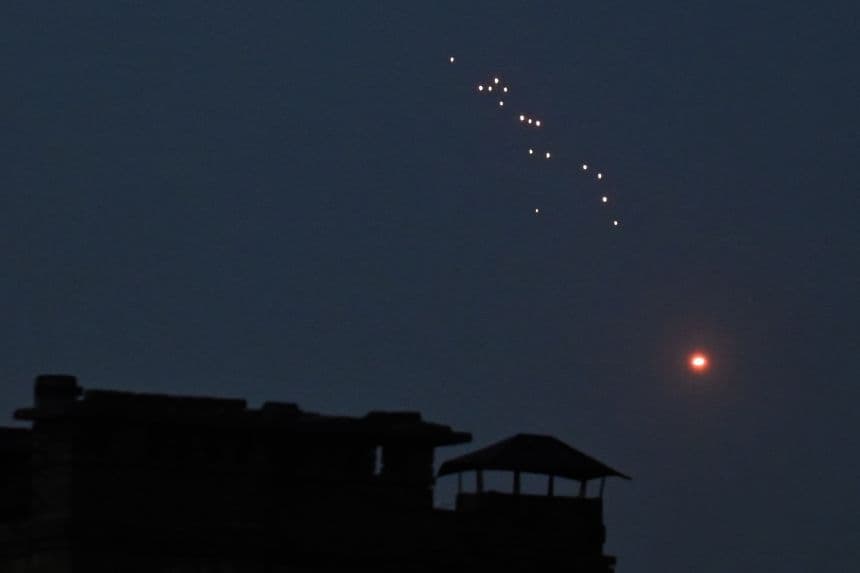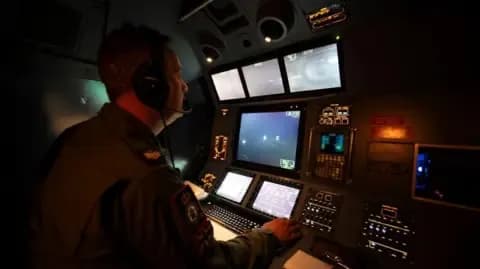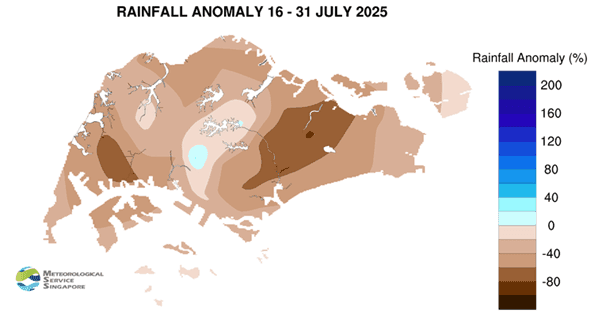Guardians of the Horizon: Inside the RAF's Evolving Mission of Deterrence
Uncover the RAF's constant, silent mission securing Europe's skies. Explore how human expertise and advanced airpower shape modern deterrence against evolving threats.

Shadows on the Horizon: The Unfolding Air War Below the Radar
Europe's skies have become a chessboard of subtle, yet increasingly dangerous, manoeuvres. Recent events have pulled back the curtain on a 'new normal' where low-level incursions test NATO's resolve daily. Just last week, the found itself at the sharp end of this strategic dance, deploying jets over . This wasn't merely a training exercise; it was a direct response to a deeply unsettling incident: 19 Russian drones detected in Polish airspace on a single day, an unprecedented escalation since . This prompted Polish Prime Minister to declare it "the closest we have been to open conflict since World War Two."
The RAF's participation in 'Eastern Sentry' alongside allies wasn't just about intercepting potential threats; it was a powerful, unambiguous signal. As Defence Secretary articulated, these flights sent "a clear signal: Nato airspace will be defended," underscoring the alliance's unified stance against what he termed "reckless Russian aggression." These are not isolated incidents; similar violations have been reported in and , highlighting a persistent, escalating pattern. The silent vigil of the RAF and its partners is more critical than ever, proving that deterrence isn't merely theoretical; it's a constant, active commitment played out in the skies above us.

From Spitfires to Stealth: A Century of Evolving Air Defence
The current vigilance over European skies, while modern in its threats and technology, echoes a much older, foundational mission for the . Eighty-five years ago, the saw the RAF, famously supported by Polish pilots, defending the nation's airspace against a relentless aerial assault. That historic struggle forged a legacy of air defence that continues to define the force today, albeit with vastly different tools. The roar of a has given way to the supersonic grace of the , the very aircraft now patrolling Poland's borders. This technological leap represents not just an upgrade in speed or firepower, but a complete reimagining of air warfare, from radar systems that peer further than ever before to advanced avionics that allow for unparalleled situational awareness.
Yet, the underlying principle remains unchanged: the unwavering commitment to securing sovereign skies and projecting defensive power. Defence Secretary 's poignant observation that RAF pilots are "once again standing shoulder to shoulder with in defence of our shared security" perfectly encapsulates this historical continuity. It's a testament to how the RAF has consistently adapted, from dogfighting biplanes to networked stealth capabilities, ensuring that its core mission of protection evolves with every new threat on the horizon. This journey from the iconic Spitfire to today's sophisticated Typhoons illustrates a relentless pursuit of aerial superiority, adapting through the decades to maintain a robust air defence posture.
The Invisible Crew: Human Ingenuity and Machine Might
While the sleek silhouettes of jets capture attention, the true strength of the lies in the remarkable synergy between its cutting-edge machinery and the dedicated individuals who operate and support them. These aren't just pilots; they are the 'invisible crew' – the mission system operators meticulously monitoring screens from the confines of an air-refuelling tanker, the ground crew who ensure every aircraft is mission-ready, and the vast network of intelligence and logistics personnel working tirelessly behind the scenes. The recent 'Eastern Sentry' mission over offered a prime example of this intricate human-machine collaboration.
Two Typhoons, launched from , performed their patrol, but their extended reach and operational endurance were only possible thanks to the critical support of an . This mid-air refuelling capability, a complex dance executed thousands of feet above the ground, exemplifies the high level of training and coordination required. Defence Secretary rightly lauded the "outstanding British pilots and air crew," acknowledging that their skill and courage are indispensable. As Marshal , Chief of the Air Staff, succinctly put it, the remains "agile, integrated, and ready to project airpower at range." This isn't just about advanced aircraft; it's about the collective ingenuity and unwavering professionalism of every person who ensures that the RAF can respond effectively, anytime, anywhere.
The Language of Presence: Airpower as a Diplomatic Tool
Beyond the immediate defence of airspace, the presence, particularly in joint operations, speaks volumes on the international stage. It’s a powerful form of diplomacy, a clear articulation of commitment and resolve that transcends spoken words. When RAF deployed over , it wasn't just a military manoeuvre; it was a potent political statement. Defence Secretary underscored this, explaining that these flights sent "a clear signal: Nato airspace will be defended." This isn't just about deterring potential aggressors; it's also about reassuring allies and demonstrating unwavering solidarity.
Marshal 's assertion that the "partnership with has never been stronger" is vividly illustrated by such deployments. Airpower, projected with agility and integration, becomes a tangible expression of collective security. When actions are described as "reckless, dangerous and unprecedented," the unified response – "When we are threatened, we respond together" – gains immense weight through the visible presence of allied fighter jets. The very act of RAF pilots "standing shoulder to shoulder with " evokes the historical bonds of shared defence and reinforces Article 4 of the treaty, which allows members to consult on security concerns. This visible commitment transforms airpower into a vital instrument of international relations, shaping perceptions and maintaining stability through a clear, unequivocal language of deterrence and alliance strength.

Tomorrow's Airspace: Preparing for the Unseen Challenges Ahead
The current landscape of drone incursions and airspace violations, while demanding, is merely a precursor to the complex challenges awaiting tomorrow's . The battlefield of the future will not be confined to traditional airspaces; it will extend into the cyber realm, with sophisticated attacks targeting vital systems, and even into space, where satellite networks are increasingly critical for communication and navigation. The proliferation of advanced, autonomous drones, capable of operating in swarms and with reduced signatures, will demand entirely new defensive strategies and technologies.
Maintaining the RAF's ability to be "agile, integrated, and ready to project airpower at range" is not a static goal but a continuous evolution. This means investing not only in next-generation aircraft and anti-drone systems but also in the digital infrastructure that underpins modern air operations. It requires fostering human talent capable of adapting to rapidly changing technological landscapes and understanding the nuanced implications of hybrid warfare. The lessons learned from today's 'below the radar' incidents, from the Polish soldier's radar blip to the urgent consultations after airspace violations, are invaluable. They underscore the imperative for constant innovation, international collaboration, and a proactive mindset to anticipate and counter the unseen, unprecedented threats that are undoubtedly on tomorrow’s horizon. The RAF's enduring mission is to remain guardians of that ever-evolving horizon.
Related Articles

The Unseen Hand: How Modern Weapons Are Reshaping Global Diplomacy

The Unseen Hand: How Modern Weapons Are Reshaping Global Diplomacy

Grounded Guardians: The Unseen Costs When Europe's Canadairs Fall Silent

Grounded Guardians: The Unseen Costs When Europe's Canadairs Fall Silent

The Unseen Architects of Tomorrow: How Weather Forecasts Guide Global Decisions

The Unseen Architects of Tomorrow: How Weather Forecasts Guide Global Decisions

Decoding Tomorrow's Whispers: The Art and Impact of Weather Prediction
